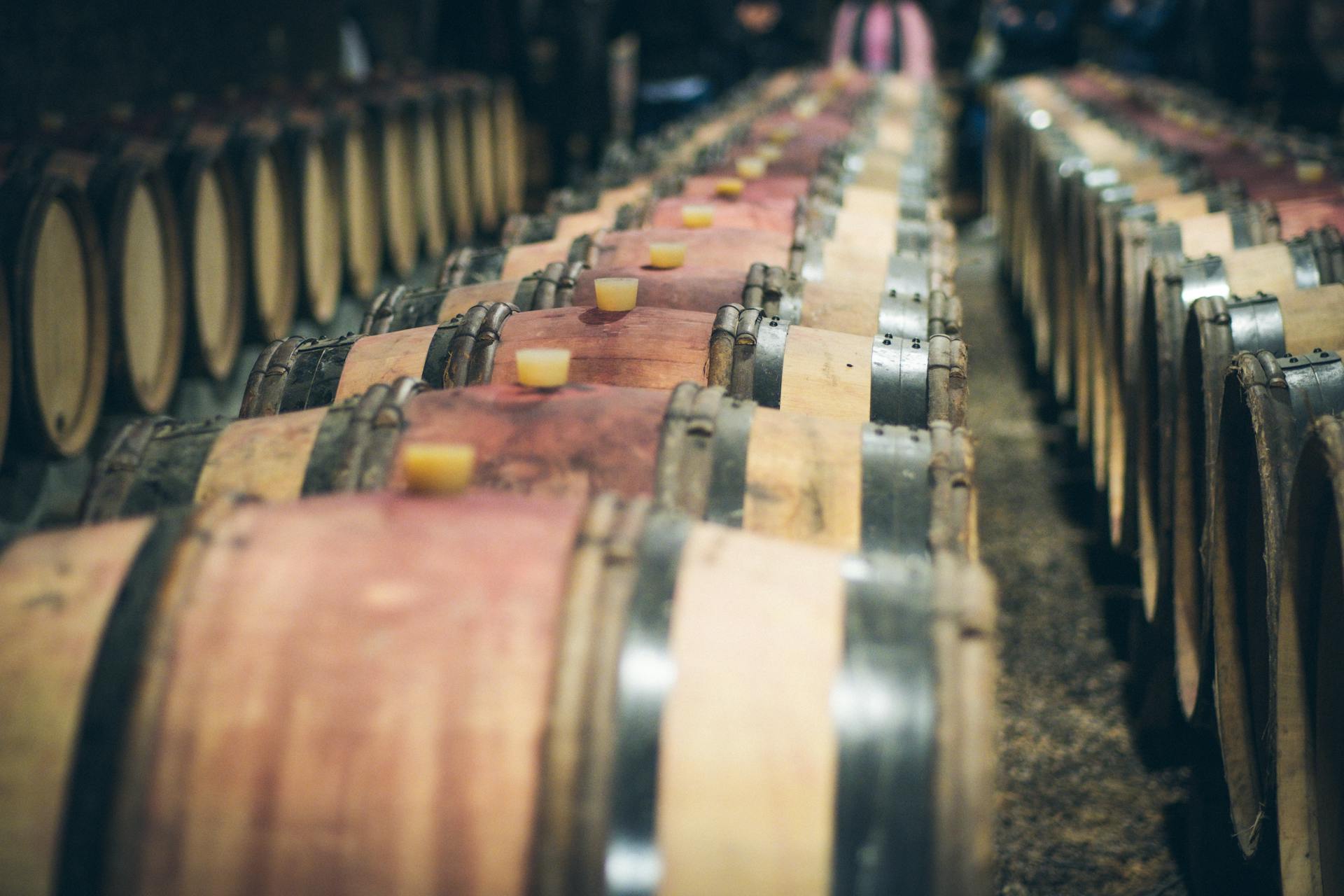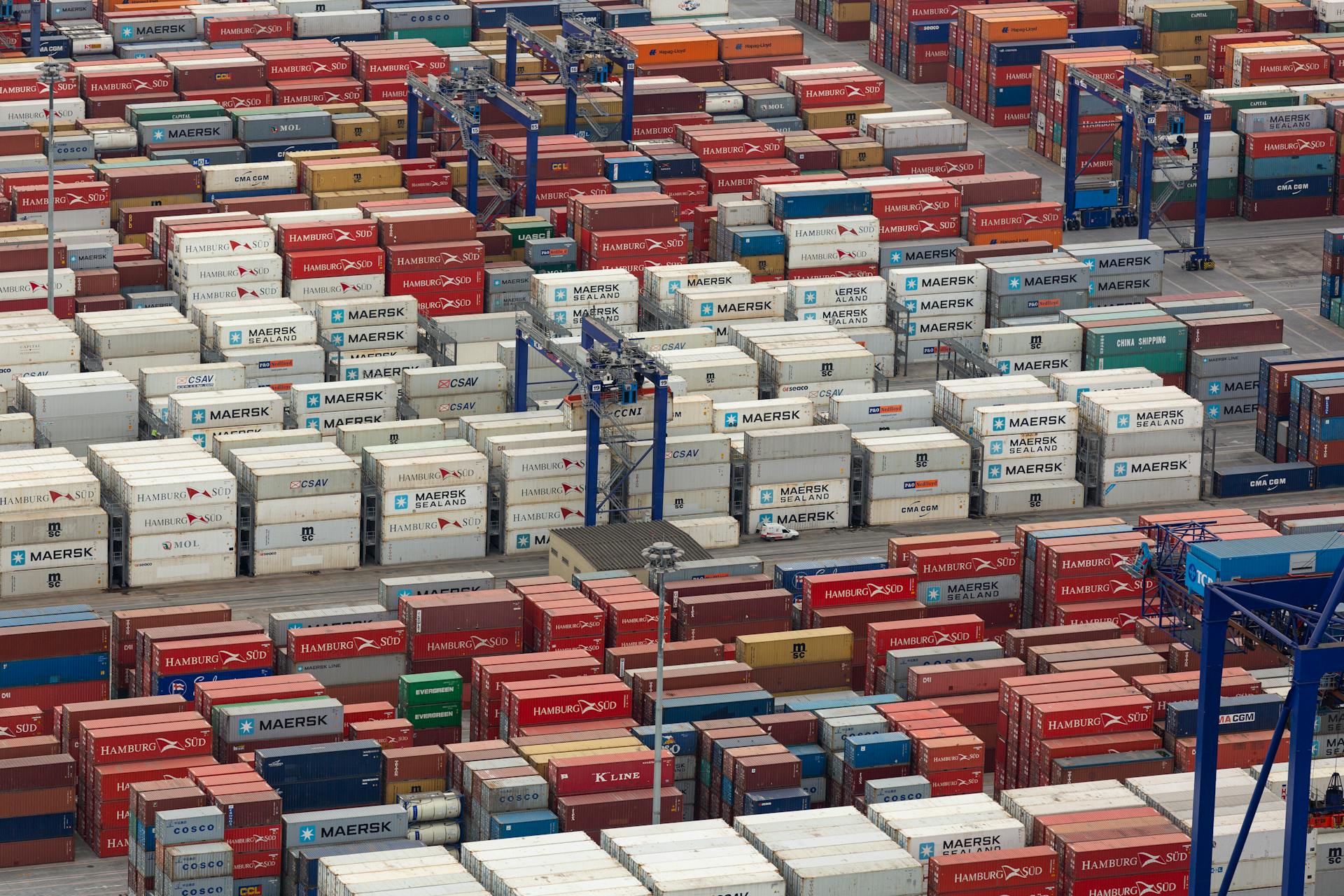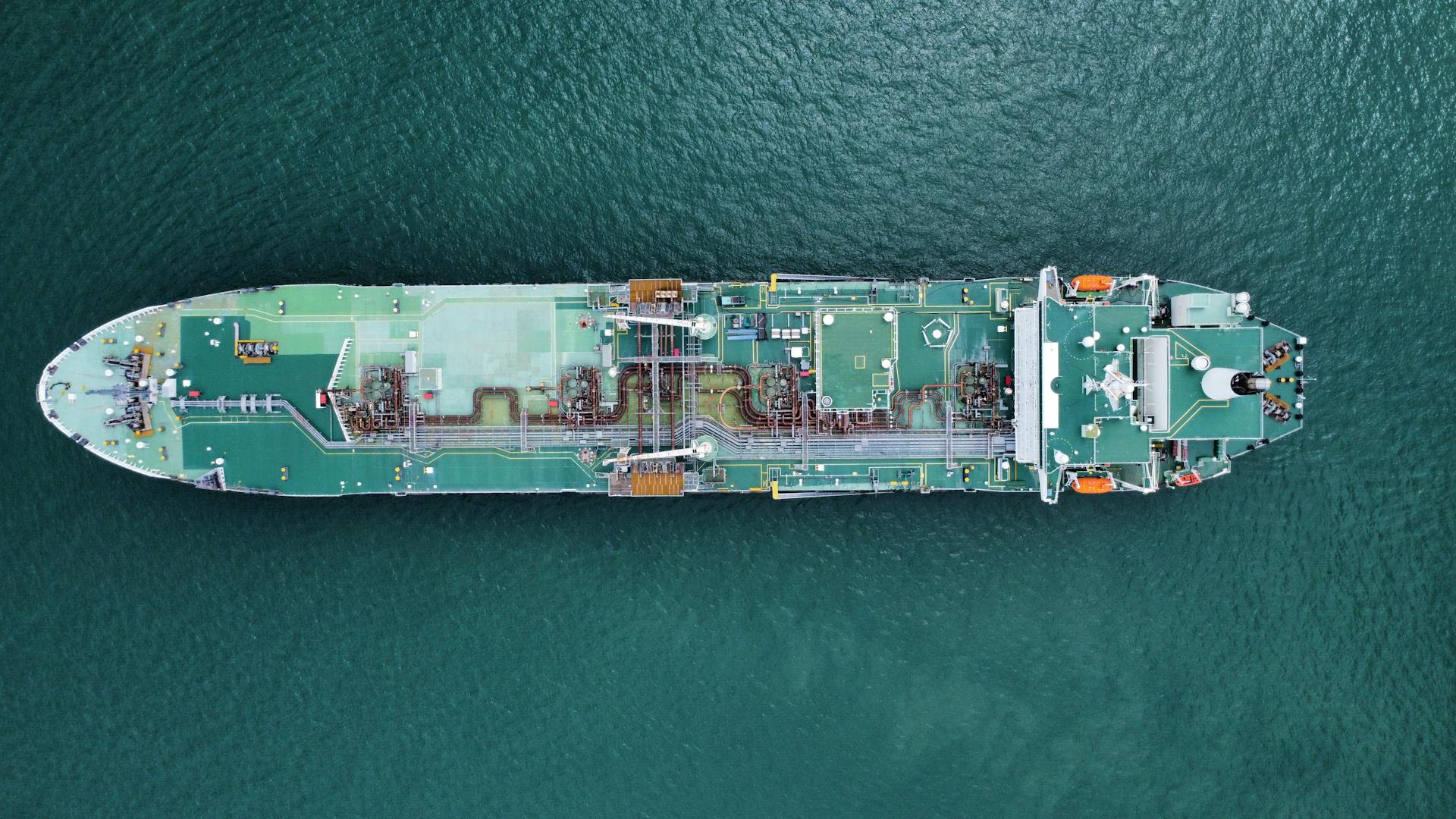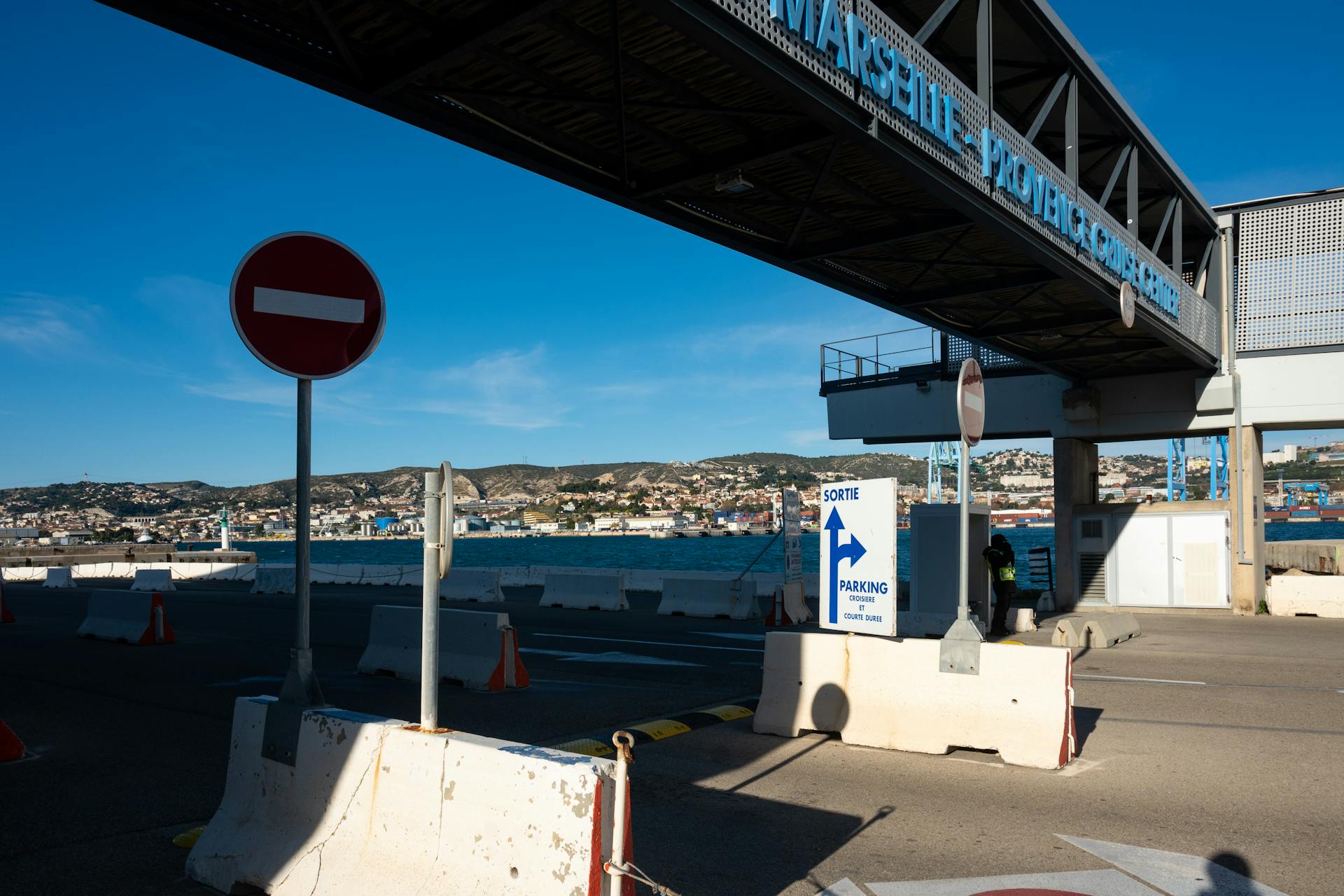
Bulk wine shipping can be a cost-efficient solution for wine businesses, especially those with high-volume orders. According to data, shipping in bulk can reduce costs by up to 50%.
With the right shipping options, you can save money on fuel, labor, and equipment costs. This is particularly true for companies shipping to multiple locations, as bulk shipping can simplify logistics.
Consider using 55-gallon drums or totes, which are the standard containers for bulk wine shipping. These containers are designed to be durable and easy to handle, making them an ideal choice for businesses with high-volume orders.
By choosing the right bulk wine shipping option, you can reduce your environmental impact while also cutting costs.
Bulk Wine Shipping Companies
When shipping bulk wine, it's essential to work with a company that understands the unique challenges of transporting this delicate product. TIBA Group has a specialized division for the transportation of bulk liquids, which has extensive knowledge and experience in using flexitanks.
Flexitanks are a great option for ocean transportation of bulk wine because they're designed specifically for this purpose. This reduces the risk of oxygen exposure, which can cause wine to degrade.
Companies like TIBA Group take the quality of the wine seriously, using flexitanks that minimize the risk of damage during transportation.
Tiba Group
TIBA Group is a reliable bulk wine shipping company that specializes in the transportation of bulk liquids.
Their extensive knowledge and experience in using flexitanks make them an ideal option for ocean transportation of bulk wine.
A major concern for exporters and importers is oxygen exposure during transportation, which can affect the quality of the wine.
TIBA uses flexitanks designed specifically for bulk transportation of wine to prevent degradation.
These specialized flexitanks ensure a safe and high-quality transportation of wine from exporters to importers.
Economies of Scale
Economies of scale are a major advantage when shipping bulk wine. Flexitanks allow you to take advantage of these economies, resulting in cost savings and a reduced carbon footprint.
Shipping 9,000 bottles of wine in a 20-foot container is a common practice, but flexitanks can hold 24,000 litres, equivalent to around 30,000 bottles. This is a significant increase in volume, making flexitanks a more efficient option.
Flexitanks also offer companies more flexibility, as they can be used for a variety of liquids, including red and white wine. A parcel tanker, on the other hand, would have to be dedicated to one type of wine.
Here are some key economic advantages of using flexitanks for bulk wine transportation:
- Flexitanks can replace a standard 20-foot dispatching holder with a 24-ton mass wine carrier.
- No need to return flexitanks to the point of origin, significantly reducing shipping costs.
- Increased limits from 16,000 to 24,000 liters, allowing for larger volumes of wine to be shipped at the same cost.
- Lower weight tare provides flexibility to expand and dispatch greater quantities at a lower cost.
- No cleaning is required for flexitanks, reducing costs and saving time.
- Flexitanks can be reused, decreasing environmental impact and reducing economic costs.
- Flexitank utility can be defined on a one-way attribute, eliminating the need for full-circle leases.
Flexitank Benefits
Shipping bulk wine can be a complex process, but it's essential to consider the benefits of using flexitanks. Flexitanks offer a significant advantage in terms of volume, allowing you to transport large volumes at once.
One of the most impressive benefits of flexitanks is their ability to hold up to 31% more volume compared to traditional containers like bottles, barrels, and IBCs. This means you can transport more wine with fewer containers.
Flexitanks also provide a cost-effective solution, with lower freight costs and a reduction in carbon footprint. This is especially important for wine producers and importers who need to manage their budget and environmental impact.
In fact, recycling is a major advantage of flexitanks, with up to 97% of used flexitanks able to be recycled. This is a significant step towards reducing waste and minimizing the environmental impact of shipping bulk wine.
Here are the key benefits of using flexitanks for bulk wine transport:
- Up to 31% more volume compared to traditional containers
- Lower freight costs
- Reduction of carbon footprint
- Recycling of up to 97% of used flexitanks
Shipping Options
ISO tanks are a great option for shipping bulk wine, as they can hold up to 26,000 liters of liquid and are designed for easy transfer to sea or rail transport.
Flexitanks are another efficient choice, offering a quick and easy way to reduce the carbon footprint of the transport process. They can hold over 80 barrels of liquid and are reusable zero-waste containers.
Flexitanks also provide a safe and reliable option for keeping your investment safe, with features like temperature control and cross-contamination prevention.
Vintage Road Haulage

Vintage Road Haulage is a family-owned business based in Wattleup, near the naval base, south of Perth.
They began operations in 1994 as a bulk wine transport company, serving the rapidly growing quality wine-producing regions of WA.
Vintage Road Haulage is a transport and distribution solution for the enormous range of haulage needs in the growing state of WA.
They serve the wine industry with their invaluable local and industry knowledge.
Time to get your visitor passes and save with online registration.
Global Reach
The US is a desirable target market for domestic and foreign wine producers, making it a key destination for wine shippers.
With a total wine consumption of 949 million in 2016, the US market is significant.
Flexitanks are versatile and adaptable to various modes of transport, including sea, rail, and road, making them suitable for reaching markets far and wide.
This flexibility allows producers to transport their products across continents, ensuring their products are enjoyed by consumers worldwide.
Flexitanks are also compatible with different liquids, making them suitable for various beverages, including wine, fruit juice, and specialty liqueurs.
Whether you're shipping wine or another type of liquid, Flexitanks provide a versatile solution for the industry.
The wine and beverage industry is truly global, with products being transported across continents.
ISO Tank Hauler
ISO Tank Hauler is a reliable shipping option for transporting liquids and hazardous materials.
These steel tanks can be reused, making them a cost-effective choice for frequent shipments.
ISO tanks are designed to fit into standard trucks and can be easily transferred to sea or rail transport, offering flexibility in logistics.
They can hold up to 26,000 liters of liquid, making them suitable for large volume shipments.
You Can Ship White & Red Together
You can ship white and red wine together, thanks to the three-pod system that allows for a mix of white, rosé, and red wine in the same container. This flexibility is especially useful when there's a shortage of 20ft containers, like we're seeing now.

The 40ft alternative is becoming increasingly popular, with payloads up to 27 metric tonnes. This option is a game-changer for companies looking to ship bulk wine.
A winery could potentially ship 60% white wine and 40% red wine, which is a big plus for those with diverse product lines. This level of flexibility just isn't possible with parcel containers, which have to be all red or all white.
This emphasis on economies of scale is a major benefit of using flexitanks for bulk wine shipping.
Why Use Sia for Transport?
SIA Flexitanks is the market leader and innovator in bulk wine transportation, having patented the Multilayer Flexitank design in 2001.
Their flexitanks are virtually unbreakable and environmentally friendly, manufactured from layers of FDA-approved Polyethylene film.
SIA offers the widest range of compatibility approvals.
Their flexitanks are resistant against aggressive substances and damage, with exceptional mechanical and elongation properties (over 600%).
SIA's production facility is ISO22000 certified, ensuring high-quality production.

Manufactured in a state-of-the-art facility, SIA Flexitanks deliver the safest, most reliable, and cost-effective solution for wine shipments.
Here are some key benefits of choosing SIA for transport:
- Virtually unbreakable and environmentally friendly
- Resistant against aggressive substances and damage
- Exceptional mechanical and elongation properties (over 600%)
- Manufactured in a state-of-the-art ISO22000 certified production facility
Understanding Options
When shipping bulk wine, you have two main options to consider: tanks and flexitanks. Traditional stainless steel tanks are robust but can be expensive for long-distance shipments due to their weight and size limitations.
Flexitanks, on the other hand, offer a cost-effective alternative that's perfect for transporting wine across continents. Flexitanks are versatile and adaptable to various modes of transport, including sea, rail, and road.
Flexitanks are also compatible with different liquids, making them suitable for various beverages. Whether wine, fruit juice, or even specialty liqueurs, Flexitanks can accommodate various liquids.
Flexitanks are reusable zero-waste containers that allow you to reduce your carbon footprint. Recycling is a viable option for most flexitanks, as it comprises polyethylene, an oil-based product.
Flexitanks are safe from cross-contamination and harm from extreme temperatures. The flexitank is a secure and reliable option for keeping your investment safe.
A single flexitank can hold over 80 barrels of liquid, making it an efficient option for bulk wine transportation.
Regulations and Compliance

Wine shippers must stay updated with all government regulations, which include maritime law protocols, amendments, and the United States safety laws. Non-compliance can result in detained containers, delayed orders, and penalties.
The weight of each shipment must be calculated, verified, and sent to numerous destinations. This is a crucial step in the process.
The U.S government re-evaluated the laws of how to sell wine and spirits within and between states in 2018, after a long time in more than a decade. This change has significant implications for wine shippers.
Temperature Controlled Transit
Temperature Controlled Transit is crucial for shipping bulk wine, as extreme temperature fluctuations can cause spoilage or tainting. The ideal temperature range is between 55 and 65 degrees Fahrenheit.
Bulk wine shipped in flexitanks is less likely to experience temperature variations during transit. This is because flexitanks are designed to maintain a consistent temperature, which can improve shelf life.
To ensure temperature control, you can use refrigerated or dry containers, but refrigerated containers are more effective. However, using protective foil in dry containers can reduce the risks of temperature fluctuations.
The SIA Trinity Tank, a 40ft flexitank, can hold up to 27,000 Litres and can be used in standard shipping containers or refrigerated units. This tank offers a reliable solution for temperature-controlled transit.
Laws & Regulations

Wine shippers must stay updated with all the government regulations, which include maritime law protocols, amendments, and the United States safety laws. Non-compliance can result in detained containers, delayed orders, and penalties.
The weight of each shipment must be calculated, verified, and sent to numerous destinations. This is crucial for enforcement and application of regulations.
In 2018, the U.S government showed interest in rethinking wine and spirits transportation laws. This led to a re-evaluation of laws governing the sale of wine and spirits within and between states.
Ensuring Liquid Quality
Ensuring Liquid Quality is crucial in bulk wine shipping. Research by Wrap in 2008 found that the deterioration process begins as soon as a wine is bottled, unless it's produced with longevity and aging goals in mind. This is when the shelf life starts, and the brand name of a premium wine can be affected if consumers have a negative perception of quality. Good brand positioning can take years to achieve and can be lost in just minutes.

The effects of temperature, fermentation, and oxygen should be studied to ensure the best possible management of quality and quantity while transporting bulk wines. This can be achieved by using proper methods for bulk shipping.
Flexitanks have transformed the way liquids, including wine and beverages, are transported. They are designed to ensure liquid quality, and their innovative features make them adept at maintaining the quality of wine and beverages.
Here are the key features of Flexitanks that ensure liquid quality:
- Aseptic Design: Flexitanks are aseptically designed, ensuring that the liquids inside are not exposed to external contaminants.
- Temperature Control: Flexitanks can be equipped with temperature control systems to maintain the desired temperature throughout the journey, even in extreme conditions.
- No Oxygen Permeation: Flexitanks are oxygen-impermeable, preventing oxidation and preserving the beverage's integrity.
- Shock Absorption: The flexibility of Flexitanks allows it to absorb shocks and vibrations during transit, reducing the risk of liquid agitation.
By using Flexitanks, wine producers can ensure that their bulk wines are protected from cross-contamination and oxygen exposure. This is especially important for delicate wines like champagne.
Advantages
Bulk wine shipping has many advantages, and one of the most significant is the ability to transport large volumes at once, up to 31% more than bottles, barrels, and IBCs.
Flexitanks are a popular choice for bulk wine shipping due to their cost-effectiveness, with reduced freight costs and a lower carbon footprint.

Their foldable design allows for efficient utilization of container space, maximizing the amount of wine you can transport per shipment.
Flexitanks are also made from durable, food-grade materials, offering superior protection against contamination and oxygen exposure.
The internal gas barrier minimizes the risk of oxidation, preserving the taste and quality of wine.
Fluid Flexitanks are single-use, disposable tanks specifically designed for bulk liquid transportation.
Here are some key benefits of using flexitanks for bulk wine transportation:
- Cost-Effectiveness: Flexitanks are significantly lighter than tanks, leading to reduced freight costs, especially for international shipping.
- Space Optimization: Their foldable design allows for efficient utilization of container space, maximizing the amount of wine you can transport per shipment.
- Product Protection: Made from durable, food-grade materials, Fluid Flexitanks offer superior protection against contamination and oxygen exposure.
- Ease of Use: Fluid Flexitanks are lightweight and require minimal setup, helping with the loading and unloading process.
- Environmentally Friendly: Compared to multiple-use tanks, flexitanks generate less waste and have a lower overall environmental footprint.
Flexitanks also offer economic advantages, such as the ability to change a standard 20-foot dispatching holder to a 24-ton mass wine carrier, reducing shipping costs and increasing the volume of wine that can be transported.

With a lower weight tare, flexitanks provide flexibility to expand and dispatch greater quantities at a lower cost, allowing businesses to benefit from the same.
The utility of flexitanks also decreases in the work reduction of packaging and labor care of work necessities, saving time and cost on processes.
Flexitanks can be stored for delays or intra-day delays, reducing losses on bulk wine for an organization, and no cleaning is required for flexitanks, bringing down the cost by a much larger scale for organizations.
Cost and Efficiency
Bulk wine shipping can be a cost-effective option, especially when using flexitanks. Flexitanks allow for up to 31% more volume compared to bottles, barrels, and IBCs.
Transporting large volumes at once is also a significant advantage of flexitanks, which can be up to 24,000 liters. This is equivalent to around 30,000 bottles, as mentioned in an interview with FreightWaves.
Flexitanks are also significantly lighter than traditional tanks, leading to reduced freight costs, especially for international shipping. They are also disposable, eliminating the need for cleaning and return logistics, which can save on logistics expenses.
Here are some key economic advantages of using flexitanks for bulk wine transportation:
- Flexitank allows probability of changing a standard 20-foot dispatching holder to that of a 24-ton mass wine carrier.
- Flexitanks don’t need to be returned to the point of origin, significantly reducing shipping costs.
- Increased Limits from 16,000 to 24,000 liters.
- With a lower weight tare it provides flexibility to expand, dispatching greater quantity at a lower cost.
Cost-Efficiency and Sustainability
Flexitanks are a cost-effective option for transportation, reducing logistics expenses by eliminating the need for return shipments, cleaning, and maintenance. They are single-use, which saves time and money.
Traditional packaging methods can be costly, but Flexitanks offer a more affordable solution. With Flexitanks, you can transport large volumes at once, up to 31% more volume compared to bottles, barrels, and IBCs.
Here are some key cost-saving benefits of Flexitanks:
- Lower freight costs
- Reduced carbon footprint
- Recycling of up to 97% of used Flexitanks
Flexitanks are also eco-friendly, producing significantly less waste than other container options. They can be recycled, aligning with the growing global focus on sustainable practices. This makes Flexitanks a favourable choice for environmentally conscious wine and beverage producers.
By choosing Flexitanks, you can reduce your environmental impact while also saving money on logistics and packaging costs.
Economic Advantages
Shipping bulk wine can be a challenge, but using flexitanks can make a big difference. Flexitanks allow you to transport large volumes of wine at once, up to 31% more than bottles, barrels, and IBCs.

One of the key economic advantages of using flexitanks is the ability to take advantage of economies of scale. As SIA CEO Damien McClean pointed out, you can get 24,000 litres of wine into a 20-foot container with a flexitank, equivalent to around 30,000 bottles.
Flexitanks also offer flexibility in shipping, allowing you to transport a mix of red and white wine, for example, without having to dedicate an entire tanker to one type of wine. This can be a big cost savings for wineries.
Using flexitanks can also reduce shipping costs and the carbon footprint of your operations. With a lower weight tare, flexitanks provide flexibility to expand and dispatch greater quantities of wine at a lower cost.
Here are some of the key economic advantages of using flexitanks for bulk wine transportation:
- Flexitank allows for the conversion of a standard 20-foot dispatching holder to a 24-ton mass wine carrier.
- No cleaning is required for flexitanks, reducing costs by a larger scale.
- Flexitanks can be reused, decreasing environmental impact and reducing economic costs.
- Flexitank utility can be defined on a one-way attribute, eliminating the need for full-circle leases.
- Flexitanks don't need to be returned to the point of origin, significantly reducing shipping costs.
- Increased limits from 16,000 to 24,000 liters, allowing for the forwarding of larger volumes of wine at the same cost.
Overall, using flexitanks for bulk wine transportation can provide significant economic advantages for wineries and wine importers.
Why Choose Fluid
Choosing the right bulk wine shipping solution can be overwhelming, but Fluid Flexitanks offers a range of options to perfectly match your specific needs.
Their team of specialists is available to answer your questions and provide technical assistance throughout the process, ensuring your wine arrives at its destination in the best condition.
One of the key benefits of Fluid Flexitanks is their variety of options, including different sizes and features to suit your requirements.
Here are some of the specific options available:
- Flexitank sizes
- Customized features
By partnering with Fluid Flexitanks, you can elevate your liquid cargo transportation game and ensure your products reach consumers in their finest form.
Considerations and Planning
Preserving the integrity and quality of your wine is crucial during every stage of its journey. Bulk wine transportation requires careful planning to ensure a smooth and successful experience.
To optimize operations, wineries can consider bulk wine transportation as a cost-effective and efficient solution. This approach allows for the expansion of reach and can help reduce costs associated with individual bottle transportation.
The logistics of transporting large volumes of wine demand attention to detail and the right tools. One must understand the importance of preserving the quality of wine during every stage of its journey.
Careful planning is essential to ensure a successful bulk transportation experience.
Benefits and Advantages
Shipping bulk wine can be a complex process, but it's made easier with the right tools. Flexitanks are a great option for transporting large volumes of wine at once.
Flexitanks can transport up to 31% more volume compared to bottles, barrels, and IBCs. This means you can ship more wine with less space.
One of the biggest advantages of flexitanks is their cost-effectiveness. They are significantly lighter than traditional tanks, leading to reduced freight costs, especially for international shipping.
Flexitanks are also designed for space optimization, allowing for efficient utilization of container space. This means you can transport more wine per shipment.
The material used in flexitanks is durable and food-grade, ensuring superior protection against contamination and oxygen exposure. This helps preserve the taste and quality of the wine.
Flexitanks are also easy to use, requiring minimal setup and no cleaning or return logistics. This saves time and resources.
Compared to multiple-use tanks, flexitanks generate less waste and have a lower overall environmental footprint. This makes them an attractive option for environmentally conscious businesses.
Here are some key benefits of using flexitanks for bulk wine transportation:
- Cost-Effectiveness: Reduced freight costs and space optimization
- Product Protection: Superior protection against contamination and oxygen exposure
- Ease of Use: Minimal setup and no cleaning or return logistics
- Environmentally Friendly: Less waste and a lower environmental footprint
- Increased Capacity: Up to 31% more volume compared to traditional containers
Overall, flexitanks offer a range of benefits that make them an attractive option for businesses shipping bulk wine.
Sources
- https://ibwsshow.com/en/blog/insights-64/bulk-wine-shipping-companies-84.htm
- https://home.kuehne-nagel.com/en/-/services/drinks-logistics-flexitank
- https://ibwsshow.com/en/blog/insights-64/everything-you-need-to-know-about-bulk-wine-transport-265.htm
- https://siaflexitanks.com/news/flexitanks-for-bulk-wine-transport
- https://www.fluidflexitanks.com/category/bulk-wine-transportation/
Featured Images: pexels.com


